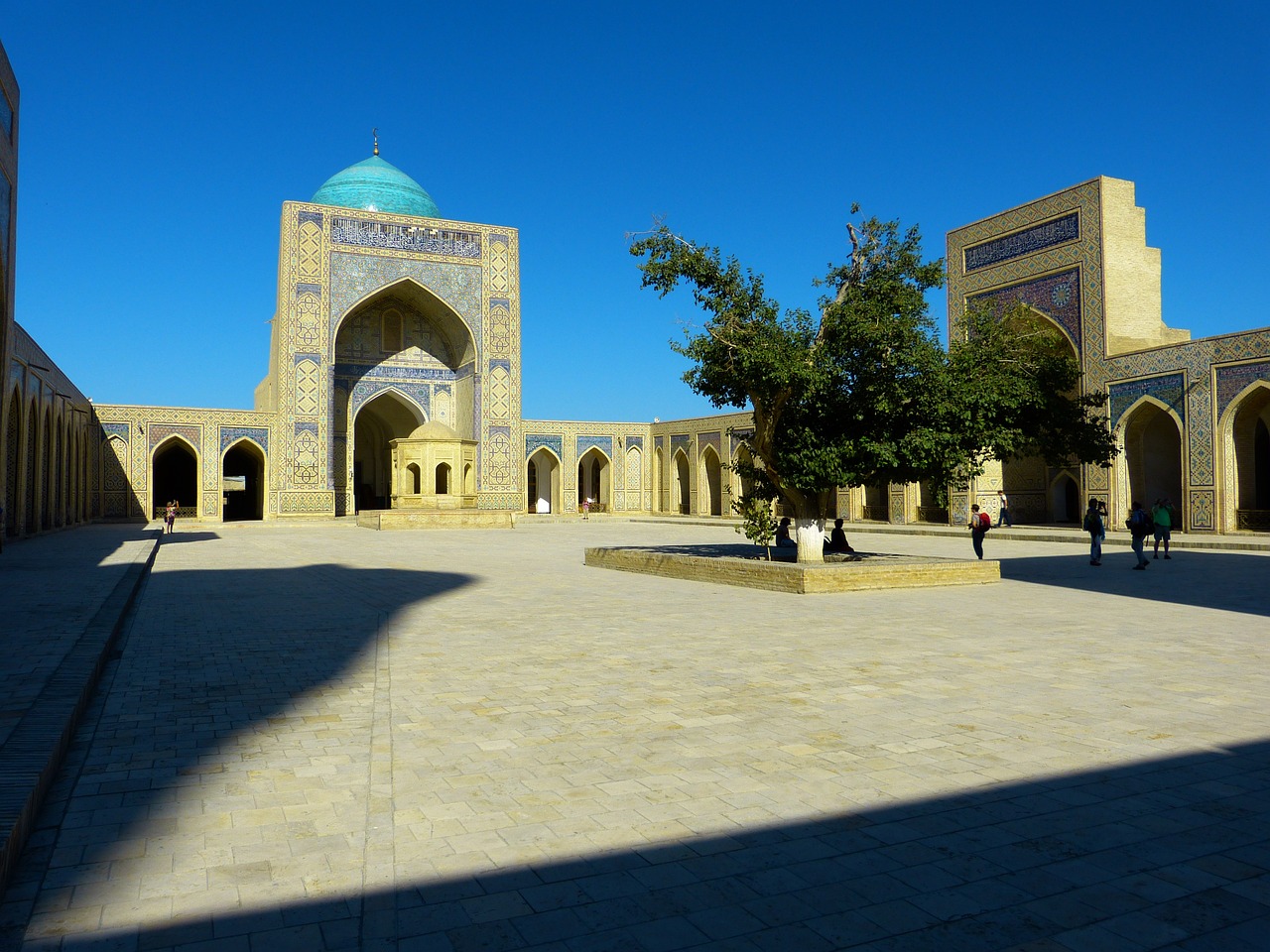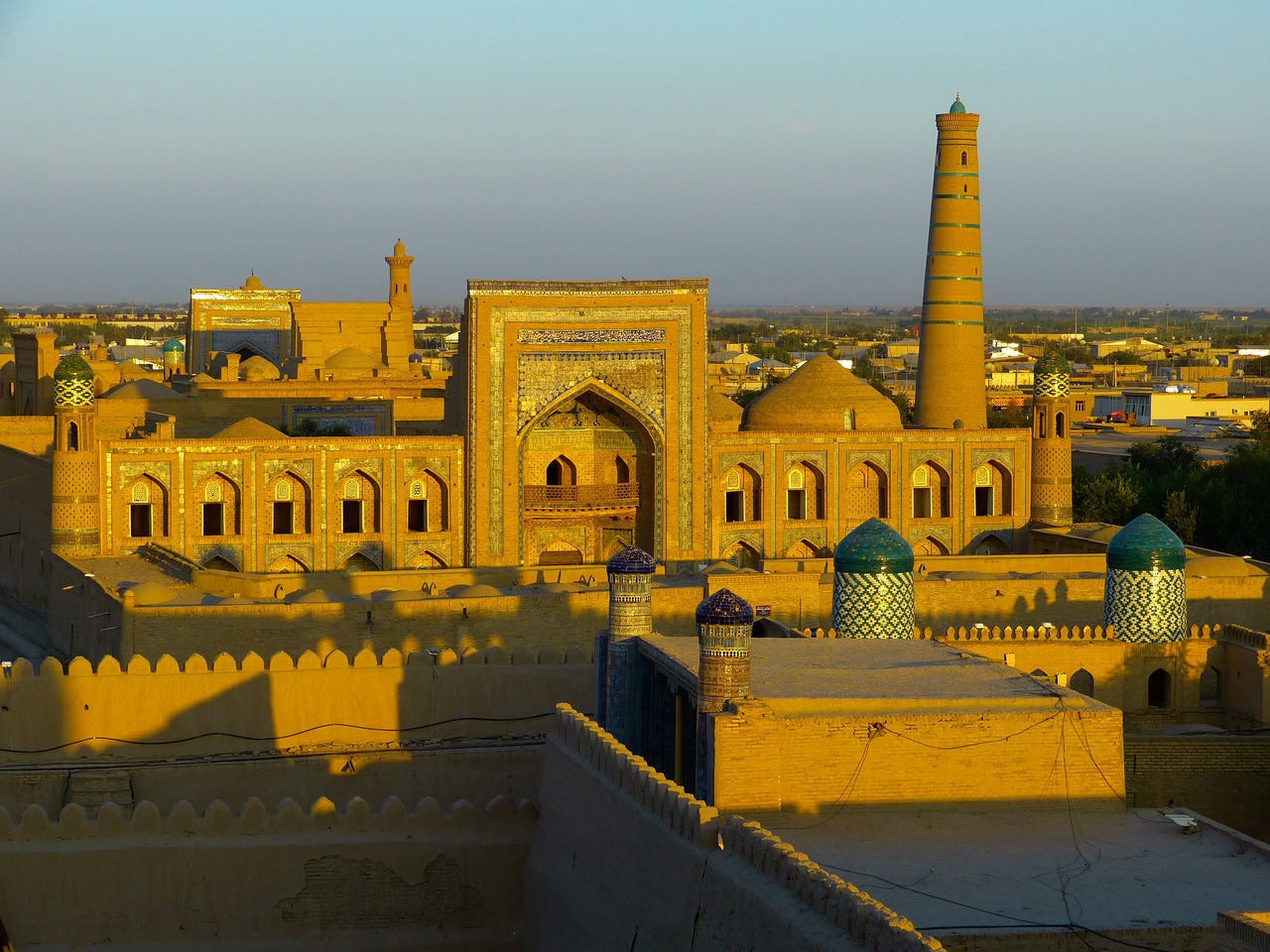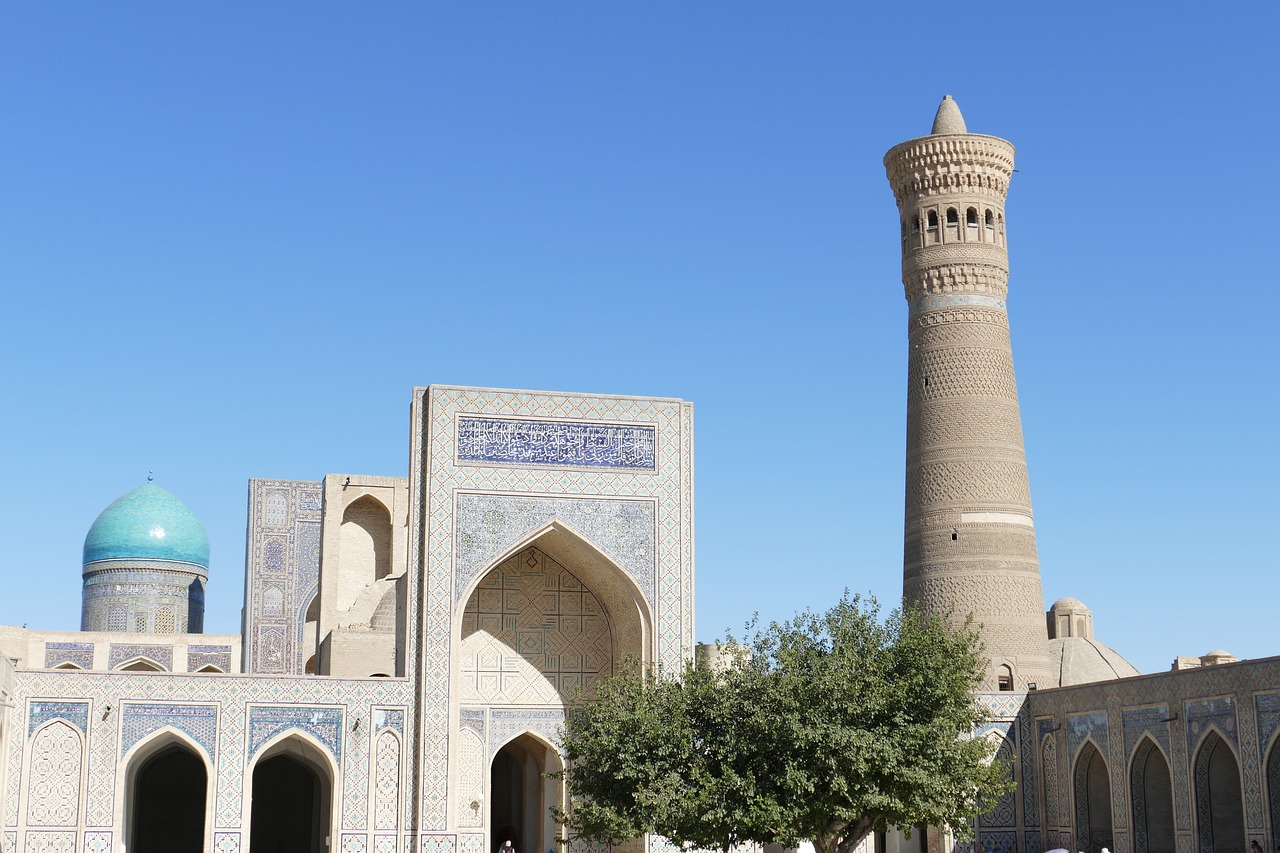Exploring Local Arts and Hobbies in Uzbekistan
Uzbekistan, located in Central Asia, is a country rich in cultural heritage and artistic traditions. From intricate handicrafts to vibrant music and dance performances, Uzbekistan offers a diverse range of local arts and hobbies for visitors to explore. In this article, we will delve into twelve different aspects of Uzbekistan’s arts and hobbies scene, providing detailed information and insights into each theme.
Traditional Uzbek Embroidery
Uzbekistan is renowned for its exquisite embroidery work, which is deeply rooted in the country’s cultural heritage. Traditional Uzbek embroidery, known as “suzani,” is characterized by intricate patterns and vibrant colors. The art of suzani embroidery has been passed down through generations, and today, you can find skilled artisans creating beautiful pieces using age-old techniques. Some popular motifs in suzani embroidery include flowers, birds, and geometric shapes. The intricate details and vibrant hues make suzani embroidery a true work of art.
- Floral Motifs: Floral motifs are commonly found in suzani embroidery. Flowers such as roses, tulips, and irises are intricately stitched, creating a visually stunning effect.
- Symbolic Meanings: Many motifs in suzani embroidery hold symbolic meanings. For example, pomegranates symbolize fertility, while birds represent happiness and good fortune.
- Materials and Techniques: Suzani embroidery is typically done on a cotton or silk fabric using silk threads. The artisans employ various stitching techniques, such as chain stitch, satin stitch, and buttonhole stitch, to create the intricate designs.
- Modern Applications: While suzani embroidery has a rich history, it has also found its way into contemporary fashion and home decor. You can find suzani-inspired clothing, accessories, and decorative items in local markets and boutiques.
Uzbek Traditional Music
Music holds a special place in Uzbek culture, and traditional Uzbek music is a captivating blend of melodies, rhythms, and instruments. The country’s musical heritage encompasses a wide range of genres, each with its unique characteristics and origins. Whether it’s the soulful sounds of the dombra or the lively beats of the doira, Uzbek traditional music offers a rich and immersive experience.
- The Dombra: The dombra is a traditional string instrument commonly used in Uzbek music. It has a pear-shaped body and two strings that are plucked to produce melodic tunes.
- The Doira: The doira is a tambourine-like percussion instrument that adds rhythmic elements to Uzbek music. It is made of a wooden frame with metal rings attached to it, producing a distinctive sound when struck.
- Genres of Uzbek Music: Uzbek traditional music comprises various genres, including maqom, shashmaqam, and katta ashula. Each genre has its own unique style and repertoire, reflecting the cultural diversity of Uzbekistan.
- Music Festivals: Throughout the year, Uzbekistan hosts numerous music festivals that showcase the country’s rich musical heritage. These festivals provide a platform for both established musicians and emerging talents to perform and celebrate Uzbek music.
Uzbekistan Image 1:

Traditional Uzbek Ceramics
Uzbekistan is renowned for its traditional ceramics, which are known for their intricate designs and vibrant colors. The art of ceramics has been a part of Uzbek culture for centuries, with master craftsmen creating stunning pottery using traditional techniques.
- Decorative Pottery: Traditional Uzbek ceramics encompass a wide range of decorative items, including vases, plates, bowls, and tiles. These pieces are often adorned with intricate geometric patterns and floral motifs.
- Glazing Techniques: Uzbek ceramicists employ various glazing techniques to achieve vibrant colors and glossy finishes. Some popular glazing methods include tin glazing and slip glazing.
- Master Craftsmen: Uzbekistan is home to many skilled ceramic artists who have mastered the art of pottery. These craftsmen often pass down their knowledge and techniques through apprenticeships, ensuring the preservation of traditional ceramic art.
- Ceramic Workshops: Visitors to Uzbekistan can participate in ceramic workshops to learn about the art of pottery firsthand. These workshops provide an opportunity to shape clay, decorate pottery, and gain insights into the traditional ceramic-making process.
Uzbek Dance and Folklore
Dance plays an integral role in Uzbek culture, with various traditional dances showcasing the country’s rich folklore and traditions. Uzbek dance forms are characterized by graceful movements, vibrant costumes, and rhythmic music.
- Lazgi Dance: Lazgi is a lively and energetic dance form that originated in the Khorezm region of Uzbekistan. Dancers perform intricate footwork and spinning movements, accompanied by fast-paced music.
- Bakhshi Dance: Bakhshi dance is a storytelling dance form, where performers narrate tales through their movements. It combines elements of dance, music, and poetry to create a captivating performance.
- Folklore and Costumes: Traditional Uzbek dances often depict stories from folklore and history. The dancers don vibrant costumes, adorned with intricate embroidery and embellishments, adding to the visual spectacle.
- Uzbek Dance Ensembles: Uzbekistan is home to various dance ensembles that specialize in preserving and promoting traditional dance forms. These ensembles perform at cultural events, festivals, and theaters, providing a glimpse into Uzbekistan’s rich dance heritage.
Uzbekistan Image 2:

Traditional Uzbek Carpets
Traditional Uzbek carpets, known as “qalin,” are renowned for their intricate designs and superior craftsmanship. These handwoven carpets are not just decorative pieces but also serve functional purposes, providing warmth and insulation.
- Designs and Patterns: Uzbek carpets feature a wide array of designs, including geometric patterns, floral motifs, and intricate borders. Each region in Uzbekistan has its unique carpet designs, reflecting local traditions and influences.
- Materials and Techniques: Traditional Uzbek carpets are made using high-quality wool, silk, or a combination of both. The carpets are handwoven using techniques such as the “double knot” or “jufti knot,” ensuring durability and longevity.
- Symbolism in Carpets: Many Uzbek carpets incorporate symbolic elements, representing aspects of Uzbek culture and beliefs. For example, the “gul” motif symbolizes fertility and protection against the evil eye.
- Carpet Workshops: Visitors to Uzbekistan can visit carpet workshops to witness the intricate process of carpet weaving. These workshops offer insights into the traditional techniques and craftsmanship involved in creating Uzbek carpets.
Uzbek Traditional Calligraphy
Calligraphy holds a significant place in Uzbek culture, with the art form being deeply rooted in Islamic traditions. Traditional Uzbek calligraphy, known as “khattati,” is characterized by its flowing lines and intricate scripts.
- Scripts and Styles: Uzbek calligraphy encompasses various scripts, including the Arabic script, which is widely used for religious texts. Different styles, such as Naskh, Thuluth, and Diwani, are employed to create visually appealing calligraphic compositions.
- Materials and Tools: Calligraphers in Uzbekistan use special tools, such as reed pens and ink made from natural pigments, to create their artwork. The choice of materials and tools plays a crucial role in achieving the desired effect.
- Islamic Calligraphy: Uzbekistan’s Islamic calligraphy tradition is deeply connected to the country’s religious heritage. Calligraphers often create intricate compositions featuring verses from the Quran or religious phrases.
- Calligraphy Exhibitions: Uzbekistan hosts calligraphy exhibitions that showcase the work of talented calligraphers. These exhibitions provide an opportunity to appreciate the beauty and skill involved in traditional Uzbek calligraphy.
Uzbekistan Image 3:

Uzbek Traditional Woodcarving
Woodcarving is a revered traditional craft in Uzbekistan, with artisans creating intricate designs on various wooden objects. From decorative panels to furniture pieces, Uzbek woodcarving showcases the skill and creativity of its craftsmen.
- Ornate Decorative Panels: Uzbek woodcarving often involves the creation of ornate decorative panels that feature geometric patterns, floral motifs, and intricate details. These panels are used to adorn architectural elements and furniture.
- Wooden Furniture: Uzbek craftsmen are known for their exquisite wooden furniture creations. Elaborately carved chairs, tables, and cabinets showcase the intricate woodcarving techniques passed down through generations.
- Traditional Woodcarving Tools: Artisans use a variety of traditional hand tools, such as chisels, gouges, and mallets, to shape and carve wood. Each tool serves a specific purpose, allowing for precise and detailed woodcarving.
- Woodcarving Workshops: Visitors to Uzbekistan can visit woodcarving workshops to witness the craftsmanship firsthand. These workshops offer an opportunity to observe the artisans at work and even try your hand at woodcarving under their guidance.
Uzbek Traditional Puppetry
Puppetry has a long-standing tradition in Uzbekistan, with the art form being used to entertain and educate audiences for centuries. Traditional Uzbek puppetry showcases storytelling, music, and intricate puppet designs.
- Shadow Puppetry: Shadow puppetry, known as “katta oshiqlar,” is a popular form of puppetry in Uzbekistan. Puppeteers manipulate intricately cut leather puppets behind a backlit screen, creating enchanting visual narratives.
- Marionette Puppetry: Marionette puppetry, known as “kugirkashak,” involves the use of string-controlled puppets. These puppets are crafted with attention to detail, allowing for intricate movements and performances.
- Traditional Puppet Characters: Uzbek puppetry often features traditional characters from folklore and legends. Characters such as Nasreddin Hodja and Khodja Nasreddin are commonly portrayed in puppet shows.
- Puppetry Performances: Puppetry performances can be enjoyed at various cultural events, festivals, and theaters in Uzbekistan. These shows offer a unique form of entertainment, combining storytelling, music, and visual artistry.
Uzbek Traditional Jewelry
Uzbekistan has a rich tradition of jewelry-making, with artisans crafting intricate pieces using traditional techniques and materials. Traditional Uzbek jewelry is known for its vibrant colors, intricate filigree work, and use of precious gemstones.
- Gold and Silver Jewelry: Uzbek jewelers often work with gold and silver to create stunning pieces of jewelry. Earrings, necklaces, bracelets, and rings are meticulously crafted, featuring intricate filigree patterns and gemstone embellishments.
- Filigree Techniques: Filigree is a popular technique used in Uzbek jewelry, where delicate metal wires are twisted and soldered together to create intricate patterns and latticework.
- Gemstone Embellishments: Traditional Uzbek jewelry often incorporates gemstones such as turquoise, carnelian, and garnet. These gemstones add vibrant pops of color and are believed to have protective and healing properties.
- Jewelry Souvenirs: Visitors to Uzbekistan can explore local markets and boutiques to find unique jewelry pieces as souvenirs. These handcrafted jewelry items make for memorable keepsakes and gifts.
Uzbek Traditional Painting
Traditional Uzbek painting, known as “nakshi,” is a form of miniature painting characterized by intricate details, delicate brushwork, and vibrant colors. This art form has a rich history and is deeply influenced by Persian and Central Asian traditions.
- Miniature Painting: Uzbek miniature painting involves creating intricate and detailed compositions on a small scale. The paintings often depict scenes from literature, history, and everyday life.
- Materials and Techniques: Traditional Uzbek painters use natural pigments derived from minerals, plants, and insects to achieve vibrant colors. The paintings are done on materials such as paper, silk, or bone, using fine brushes and precise brushwork.
- Artistic Themes: Uzbek miniature paintings often depict themes such as courtly life, poetry, and religious narratives. The compositions are filled with symbolism and intricate details, inviting viewers to explore the stories within.
- Art Galleries and Museums: Uzbekistan is home to several art galleries and museums that showcase traditional miniature paintings. These venues provide an opportunity to appreciate the skill and artistry of Uzbek painters.
Uzbek Traditional Theater
Traditional theater forms hold a significant place in Uzbek culture, with performances combining music, dance, and storytelling. These theater forms provide a glimpse into Uzbekistan’s rich cultural heritage and traditions.
- Katta Ashula: Katta Ashula is a traditional form of Uzbek theater that combines music, dance, and storytelling. Performers, known as “ashiks,” use musical instruments and vocal techniques to captivate the audience.
- Historical Epics: Traditional Uzbek theater often portrays historical epics, such as the “Alpamysh” and “Bobur,” which depict heroic tales and legends from Uzbekistan’s past.
- Theatrical Costumes: Theatrical performances feature elaborate costumes that reflect the historical period and the characters being portrayed. These costumes are often adorned with intricate embroidery, jewelry, and accessories.
- Theater Festivals: Uzbekistan hosts various theater festivals that bring together local and international theater groups. These festivals provide a platform for artists to showcase their talent and celebrate the diversity of theater arts.
Uzbek Traditional Pottery
Pottery-making is a traditional craft that has been practiced in Uzbekistan for centuries. Traditional Uzbek pottery is known for its unique shapes, intricate designs, and vibrant colors.
- Decorative and Functional Pottery: Uzbek pottery encompasses both decorative and functional pieces. From intricately designed vases and bowls to everyday items like teapots and plates, traditional Uzbek pottery offers a wide range of options.
- Traditional Techniques: Artisans in Uzbekistan use traditional techniques such as wheel-throwing and hand-building to create pottery. The clay is shaped, dried, and then fired in kilns to achieve the final product.
- Geometric and Floral Designs: Uzbek pottery is often adorned with intricate geometric patterns and floral motifs. These designs are meticulously painted or carved onto the surface of the pottery.
- Visiting Pottery Studios: Visitors to Uzbekistan can visit pottery studios to witness the pottery-making process firsthand. These studios provide an opportunity to observe the artisans at work and even try your hand at creating your pottery.
Conclusion
Exploring local arts and hobbies in Uzbekistan offers a fascinating insight into the country’s rich cultural heritage. From the intricate embroidery work to the captivating music and dance performances, Uzbekistan’s arts scene is vibrant and diverse. Whether you’re interested in traditional crafts, music, theater, or painting, Uzbekistan has something to offer every art enthusiast. By immersing yourself in the local arts and hobbies, you can gain a deeper appreciation for Uzbekistan’s unique cultural traditions and the skill and creativity of its artisans.
References
- Gypsy Warrior – gypsywarrior.com
- Uzbekistan Tourism Board – uzbekistan.travel
- Uzbekistan Ministry of Culture – culture.uz
- Uzbekistan National Museum of Art – artmuseum.uz

